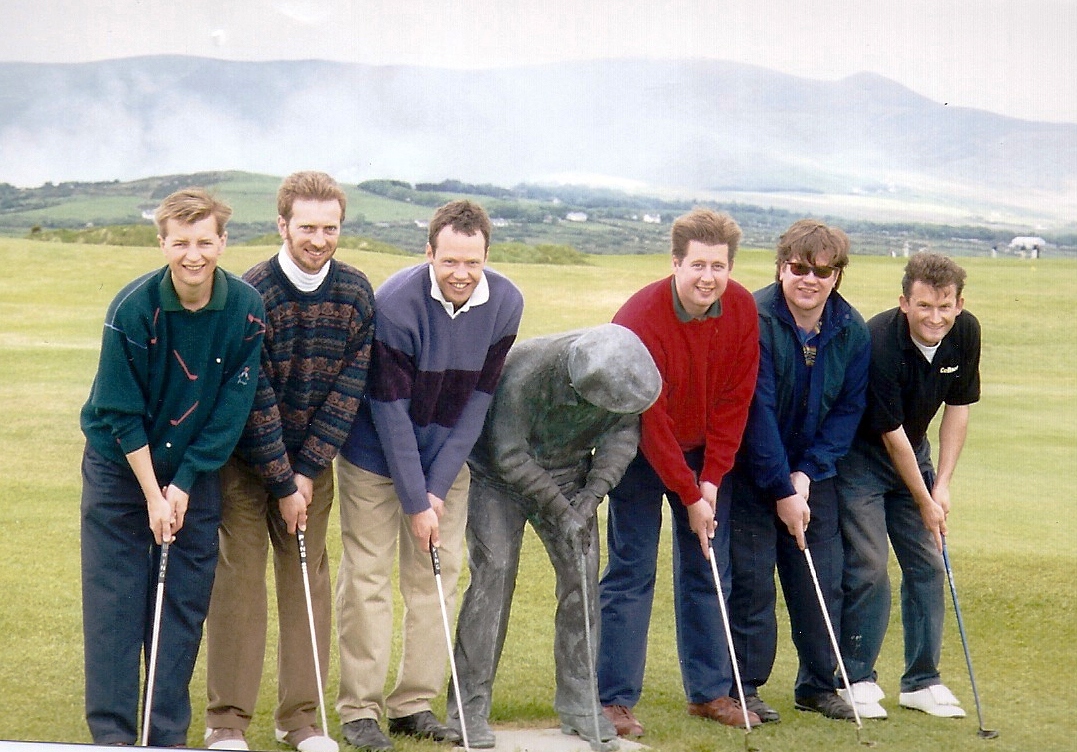
In my last blog, we looked at drivers. Today, we’ll explore the other 13 clubs in the bag.
Fairway woods
Normally available in 3, 5, and 7 wood options; the higher the number the more loft and easier to get the ball airborne off the fairway. Personally, I have so-called “high launch models so my 3 wood has additional loft and is more like a 4 wood in reality.
The club shaft issue in my previous blog is just as relevant for fairway woods, hybrids and irons.
Again, I’d recommend a club fitting as you can try a variety of clubs and narrow down your choice to the ones that perform the best.
Failing that, try a few and go with the one you most like the look of.
Hybrids vs. Long Irons
There’s a long-standing joke amongst golfers that “even God can’t hit a 1 iron!” If you are a single figure player who compresses the ball well then it’s still worth having some long irons in your bag (in the 1-4 iron range). However, for mid to high handicappers, you may prefer to abandon the long irons and instead go for hybrids. These versatile clubs are a cross between a wood and a long iron with more loft and more mass than their equivalent long iron and a small, rounder shaped head that cuts through the semi rough where a long iron could get stuck or twist. Hybrids are easier to launch the ball off the fairway and useful for putting around the green (where the fringe grass prohibits the use of a putter).
The extra height generated make them ideal for par 3’s guarded by bunkers or second shots to par 4’s where hazards need to be carried. If you elect for hybrids, go for a matching pair rather different brands. Concentrate on distance gapping between your mid irons, hybrids and your fairway woods.
Mid/Short irons
Again, go for a matching set as the weights, lies, and distance gapping between clubs will be more consistent than a variety of different brands.
Wedges
Wedges are at the “scoring end” of your golf game and well worth some investment. Being able to hit a green consistently from 100 yards and in, with good distance control which could then set you up to make some putts is very exciting. Wedges come in broadly 4 types: a Pitching wedge (PW), a Sand wedge (SW) (designed for bunker use but also good out of heavy rough or lush lies around the green where obstacles need to be negotiated) A gap wedge (to fill the gap between a PW and SW) and a lob wedge (LW) (offering maximum height and useful in bunkers with little sand or tight fairway lies)
A further complication is that wedges come in various bounce and grind configurations. If you order off the shelf clubs this is less relevant but if you elect for a fitting, the fitter will study your “angle of attack” (steep or shallow) ask you what kind of course you play and consider your skill level and wish to play a variety of shots with the same club . The lusher the fairways typically would want more “bounce” to allow the club to glide through the grass and stop it “digging in” and creating a “fat” shot. Conversely, if you play a links type course with tightly mown fairways, less bounce would suit and avoid the sole of the club literally bouncing on the surface resulting in a “thinned” shot.
Choosing wedges of the same brand for consistency and also choosing the right loft per club to will help your distance control immensely.
For example if your PW is 45 degrees, choose a GW around 48-50 degrees, a SW 54-56 degrees and a LW of 58-60 degrees. This is where a club fitter comes into their own as they can measure your distances with a variety of lofts and find the ideal distance gapping for you.
Putters
A real game within a game! We tend to use our putter more than any other club in the bag but it’s often neglected (roughly 40% of all shots played in a round).
Ken Brown has written a great “little” book on how to choose a putter called “One Putt”
Considerations when choosing a putter might be:
- Head type
- Mallet – suits a straight back/straight through stroke or
- Blade/Anser style which favour more of an arc shaped putting stroke (in/square/in)
- Putter length
- Weight/Balance
- Grip type and thickness
If you can’t afford a fitting, just try lots of putters until you find a style you like
Summary
Do take the time to find golf clubs that best suit you and your golf swing. Having made-to-measure clubs through a professional club fitter needn’t break the bank but will ensure your new golf set gives you the best chance to excel.
In my next blog I’ll explore how to choose other essential golf equipment from bags to ball markers and many inbetween.
tony@thegolfswingcompany.com 07764 895 045
Facebook: @TheGolfSwingCompany